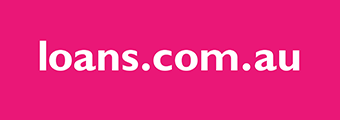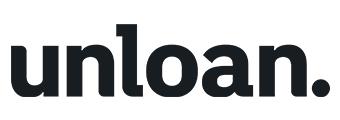
Banking was highly state-based and segregated before Australia’s federation in 1901. It took the financial crisis of 1893 to cause a re-think and a re-shape of Australia’s banking landscape into something modern.
With the help of the Queensland Government’s state-owned bank, the Queensland National Bank Limited Guarantee Act guaranteed all deposits for a year after 1893, staving off any bank runs or losses. By 1918, the Queensland Government had been paid back.
Through a litany of mergers and acquisitions, and name changes, we have four familiar brands today. Two are publicly-listed companies, while two are customer-owned. So, how do they rank?
There are many ways to look at it but one way is measuring their size through the value of residents' assets on its books.
|
Rank |
Bank |
Residents' Assets (billion) |
|---|---|---|
|
1 |
Bank of Queensland |
$119.260 |
|
2 |
Suncorp |
$93.110 |
|
3 |
People First Bank (Heritage Bank) |
$27.810 |
|
4 |
Great Southern Bank |
$22.434 |
Source: APRA Monthly ADI Statistics - October 2023
While these banks pale in comparison to the likes of the major banks in CBA, NAB, ANZ, and Westpac, which collectively hold more than $3 trillion in residents' assets, they serve a mighty challenge and provide crucial services to Queenslanders and Australia as a whole.
Bank of Queensland and Suncorp provide vital banking and loan services to farmers and core Queensland industries, while Heritage and Great Southern Bank serve their customers, who are also owners, and provide a solid banking alternative.
Let’s not forget another large Queensland lender - Firstmac
While not a bank, Firstmac is a non-bank lender with more than $16 billion in home loans on its books. In this regard, it’s the third-largest Queensland-based lender. If you stripped out People’s Choice’s presence from People First Bank, Firstmac would be second-largest.
Firstmac began in 1979 as Lease Nationale Finance, and over the years has provided more than 130,000 home loans. In 2011 its direct-to-consumer loans.com.au digital brand launched, which currently has about $6 billion in loans on its books.
In the interests of full disclosure both InfoChoice is an associate of loans.com.au and Firstmac.
Other Queensland-based banks and credit unions
Below is a list of other Queensland-based banks and credit unions, and their subsidiaries, as well as the location of their headquarters.
-
Auswide Bank - Bundaberg
-
Queensland Professional Credit Union
-
-
Cairns Bank - Cairns
-
The Capricornian - Rockhampton
-
First Commercial Bank - Brisbane
-
MOVE Bank - Brisbane
-
QBANK - Brisbane
-
Queensland Country Bank - Townsville
-
Warwick Credit Union - Warwick
-
Dalby Credit Union
-
Gympie Credit Union
-
| Lender | Home Loan | Interest Rate | Comparison Rate* | Monthly Repayment | Repayment type | Rate Type | Offset | Redraw | Ongoing Fees | Upfront Fees | Max LVR | Lump Sum Repayment | Extra Repayments | Split Loan Option | Tags | Features | Link | Compare | Promoted Product | Disclosure |
|---|---|---|---|---|---|---|---|---|---|---|---|---|---|---|---|---|---|---|---|---|
5.29% p.a. | 5.33% p.a. | $2,773 | Principal & Interest | Variable | $0 | $530 | 90% |
| Promoted | Disclosure | ||||||||||
5.19% p.a. | 5.10% p.a. | $2,742 | Principal & Interest | Variable | $0 | $0 | 80% |
| Promoted | Disclosure | ||||||||||
5.39% p.a. | 5.43% p.a. | $2,805 | Principal & Interest | Variable | $0 | $530 | 90% |
| Promoted | Disclosure |
1. Bank of Queensland
Bank of Queensland (BOQ) is one of Australia's oldest banks, established in 1863. But because of the severe financial depression caused by borrowing from overseas, the bank was quickly shut down in 1866.
The bank would return, though, in 1874 as The Brisbane Permanent Benefit Building and Investment Society which became a bank in 1887. It wouldn't be until 1970 that the bank would return to its original name of Bank of Queensland. It became publicly-listed in 1971.
In more recent times Bank of Queensland has acquired Virgin Money Australia (2013), and ME Bank (2021).
It employs more than 3,000 staff, has more than 160 branches, and 2,300 ATMs. Its ASX sign is BOQ and its market cap is $3.95 billion. It has nearly $60 billion in home loans on its books, and nearly $34 billion in household deposits.
The institution offers a comprehensive range of home loans, savings accounts, term deposits, and credit cards. Notably, it ceased offering car loans to new customers from October 2023. It is also one of the few banks to offer SMSF loans through its BOQ Specialist arm.
Figures correct as of December 2023.
2. Suncorp Bank
The genesis of Suncorp Bank began in 1902 when Queensland Agricultural Bank was opened to service rural communities in south-west Queensland.
In 1986, the Queensland Agricultural Bank became government-owned and was rebranded QIDC.
Meanwhile, in 1959, Metway Bank was created when the Metropolitan Permanent Building Society (MPBS) became an authorised bank and changed its name.
QIDC and the Queensland Government-owned Suncorp merged with Metway to become Suncorp Metway Bank in 1996. This was simplified to Suncorp in 2002.
More recently, Suncorp expressed its desire for ANZ to acquire its banking arm, but this was blocked by the competition regulator, the ACCC, in 2023. The deal would have been worth $5 billion. In late 2023 Suncorp Bank and ANZ appealed to the Australian Competition Tribunal. The saga continues in 2024.
Suncorp Bank offers home loans, savings accounts, term deposits, and credit cards. It employs more than 13,000 staff, and has a market cap of $17.61 billion on the ASX (SUN). It has nearly $52 billion in home loans on its books, and nearly $16 billion in household deposits.
Figures correct as of December 2023.
3. Heritage Bank
The Toowoomba Permanent Building Society was founded in 1875 and operated side-by-side with the Darling Downs Building Society which opened in 1897.
In 1981, the two building societies merged to become Heritage Building Society which was changed to Heritage Bank in 2011.
In more recent history, it merged with Adelaide-based People’s Choice Credit Union to become Australia’s largest customer-owned bank in terms of assets. Previously it was the third-largest customer owned bank.
The merged entity then announced a name change in late 2023 to People First Bank. It has 730,000 customers, 2,000 employees, and 95 bank branches. Heritage Bank continues to offer home loans, personal loans, savings accounts, term deposits, and credit cards.
People First has more than $18 billion in home loans on its books and nearly $16 billion in household deposits.
Figures correct as of December 2023.
4. Great Southern Bank
Australia's third-largest customer-owned bank started life in 1946 as the result of a merger of several smaller credit unions. Since then, more than 171 credit unions have become part of Great Southern Bank.
Great Southern Bank can trace its roots back to 1946, starting off as the 'Thrift and Loan Credit Union' in 1946. It changed name to Credit Union Australia (CUA) in 1980. And then it changed its name again to Great Southern Bank in 2021 after some research from the institution revealed many customers aren’t aware of what being a ‘credit union’ actually means.
These days GSB offers home loans, car loans, savings accounts, term deposits, and credit cards. It has more than half a million members, and nearly 50 bank branches.
Great Southern Bank has more than $15 billion in home loans on its books, and more than $12 billion in household deposits.
Figures correct as of December 2023.
Photo by Caleb on Unsplash
First published in October 2019

